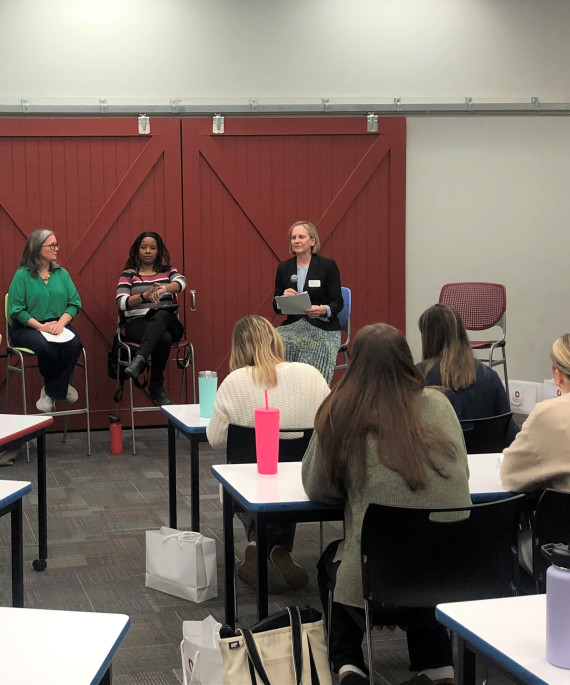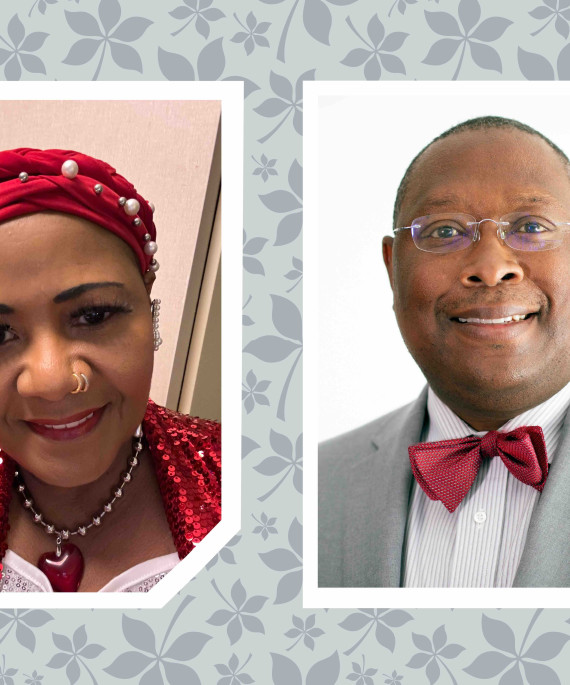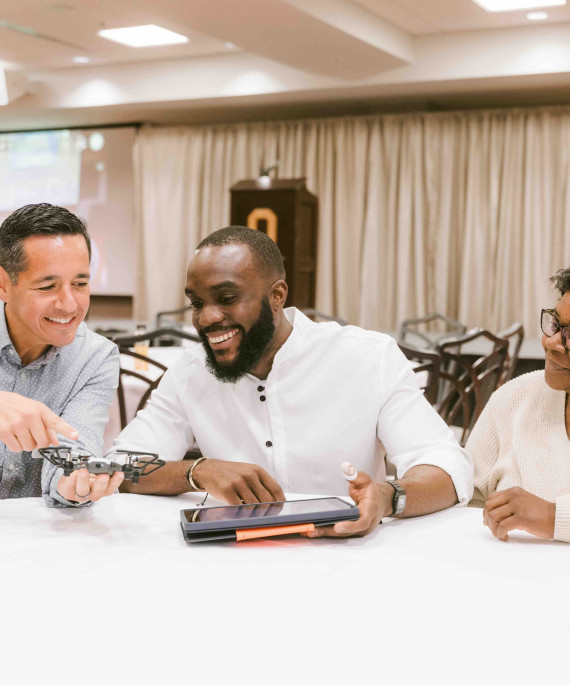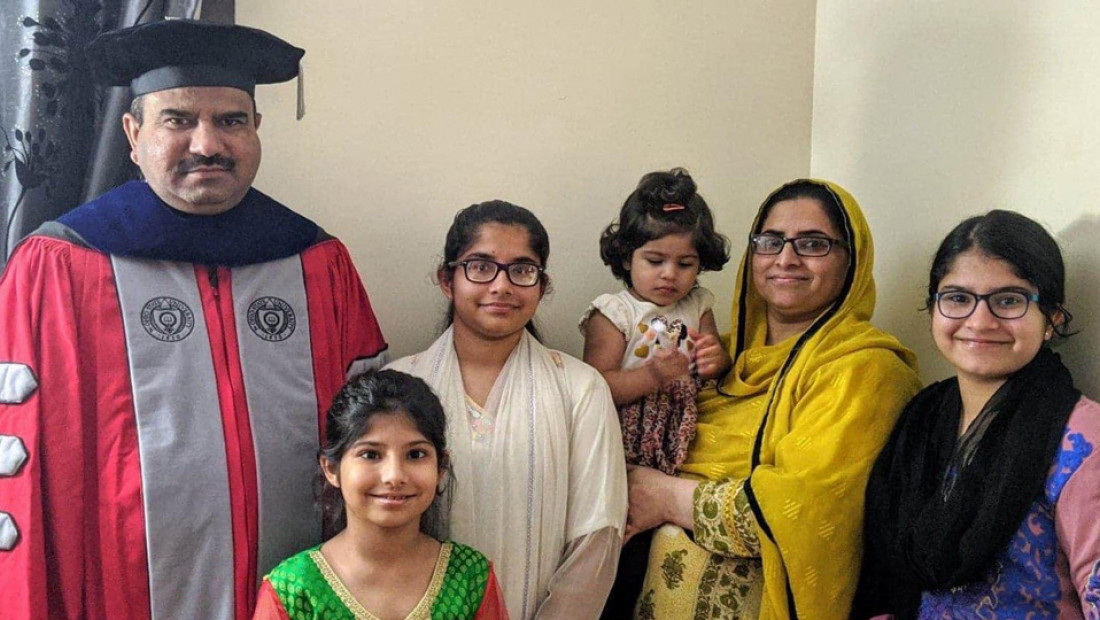
Originally from Pakistan, Ishtiaq Ahmed, a PhD student in Teaching and Learning, and his family have lived in Columbus for the last five years.
On a typical day before COVID-19, hundreds of students headed for Thompson Library to grab coffee and study between classes. At any hour, you might have found Ishtiaq Ahmed among the polished bookshelves of the Grand Reading Room.
As a fifth-year PhD candidate specializing in language, education and society, Ahmed preferred to study in the library, its ambient soundscape shaped by shuffling sneakers and occasional murmurs from campus tour groups.
But while other students around him skimmed the last page of their next class’s reading, Ahmed patiently listened to audio recordings of his textbooks — a tedious process. He would sometimes sit for several hours before determining whether or not a single source could be used for his dissertation — a study on the inclusion of students with visual impairments, like himself, in STEM classrooms.
Both student and teacher
Ahmed, a Fulbright Fellow from Pakistan, didn’t realize he was visually impaired until he started struggling in school at age 17. By his early 20s, he had lost nearly all eyesight.
During his transition from “a sighted world to a sightless world,” he experienced liminality, or a sense of displacement between an old way of being and a new. This critical period lasted several years during which Ahmed questioned whether to identify with sighted peers or the blind community.
Educators played an important, motivating role for both him and his family.
“During this transition, I met with many people who guided me through the process, motivated me, encouraged me, including family and educators,” he said. “It was something that actually inspired me to work for persons with disabilities later on.”
Adapting to his new lifestyle, Ahmed pursued higher education but noticed his favorite subjects, mathematics and physics, were much more challenging than before.
With firsthand knowledge of sighted and sightless learning, Ahmed was concerned about the radically different experiences of students with visual impairments. So, he sought to understand education practices that stigmatize them.
Resolving inequity, effecting change
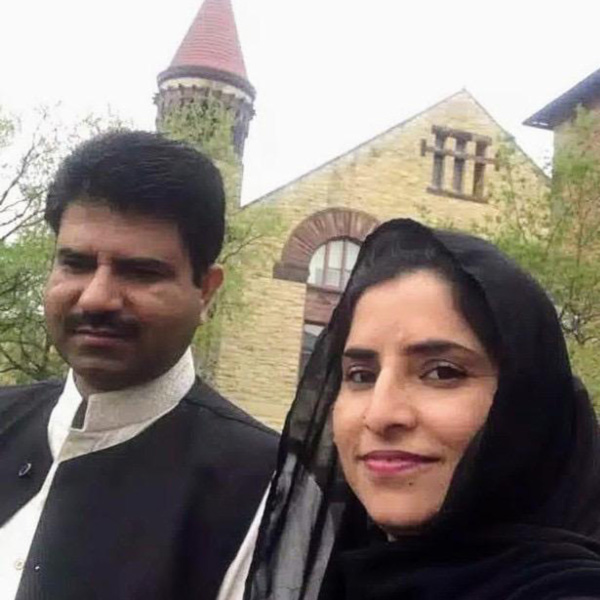
Ahmed consecutively completed four master’s degrees while working as a high school math and science teacher in Rawalpindi, Pakistan. During that time, he started critiquing accessibility issues in science, technology, engineering and mathematics education.
If you ask him, Ahmed explains the greatest challenge for those with visual impairments is convincing others that they belong in STEM classrooms and workplaces. Educators, he contends, are key stakeholders with the power to revolutionize the experiences of students with disabilities. But many general education teachers aren’t trained to address different learning preferences.
“Because of their (teacher’s) perception, students with visual impairments are not provided opportunities,” he said. “It’s recommended that they study humanities, or other social sciences.”
Despite those stereotypes, Ahmed pursued his career goals involving mathematics and science, and he chose math education as the topic of his doctoral dissertation.
“My dissertation … takes the experiences (of students with visual impairments, parents and educators) into account. How can teachers and other stakeholders help in mathematics education, and what are the challenges they experience doing mathematics?”
Using a disability studies lens, which considers social perceptions of disability, Ahmed interviewed students, parents and teachers from different Ohio regions for his study.
Teachers expressed a lack of knowledge about visual impairment, which Ahmed believes is because it is such a low-incidence disability. The National Center for Education Statistics found that visually impaired students account for less than 0.5% of students served under the Individuals with Disabilities Act, which established the Individualized Education Program in 1975.
And although teachers are eager to intervene with assistive technology, Ahmed warns that some technology does little to transform teaching and learning. Many merely replace visual information with audio, instead of creating new ways of learning.
Much like his own experience, the students Ahmed interviewed shared a frustration with visual approaches to teaching math.
“Mathematics is regarded as a visual subject … using visual means of teaching, for example, visual language — ‘You can see in this picture’ — or body gestures definitely frustrates students,” he said.
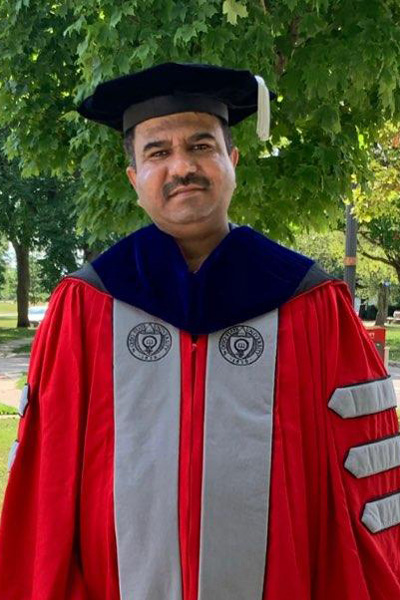
Geometry was particularly difficult for students; they felt assignments weren’t fair or accessible, especially when asked to draw circles and angles.
Instead of traditional approaches to math like drawing, Ahmed advocates for multisensory instruction that engages all five senses. He recommends using three-dimensional shapes that students can feel, mold and turn into models.
He believes interacting with math in nonvisual ways deepens conceptual understanding for all students, even sighted ones.
“Let them grasp concepts differently so that they can learn properly. That is a kind of durable learning, long-term learning,” he said.
Making a lasting impact
When campus and its libraries closed in March, Ahmed could no longer study in Thompson Library. He had to finish his final semester at his Columbus home, where he lives with his wife and five kids. It’s an especially difficult challenge for him because studying requires full concentration on just listening.
He eventually decided to study overnight and sleep only a few hours during the day.
On June 16, he successfully defended his dissertation, and after graduating in August will return to Pakistan.
Ahmed wants to continue teaching high school math and science in Rawalpindi. There, he can immediately impact students with disabilities. His goal is to integrate visually impaired students into Pakistan’s general education system.
But he also hopes to share what he’s learned with professionals by training special education teachers at Allama Iqbal Open University in Islamabad, Pakistan.
“I plan to work for inclusion … I’m really excited to include students with disabilities in our general ed system. That is honestly my ultimate goal — to have those students in mainstream school settings,” he said.
“But inclusion should continue outside the classroom,” he continued. “These people can add a new perspective to organizations, so trust their ability. It's very important that they have equal opportunities, especially equal employment opportunities.”

